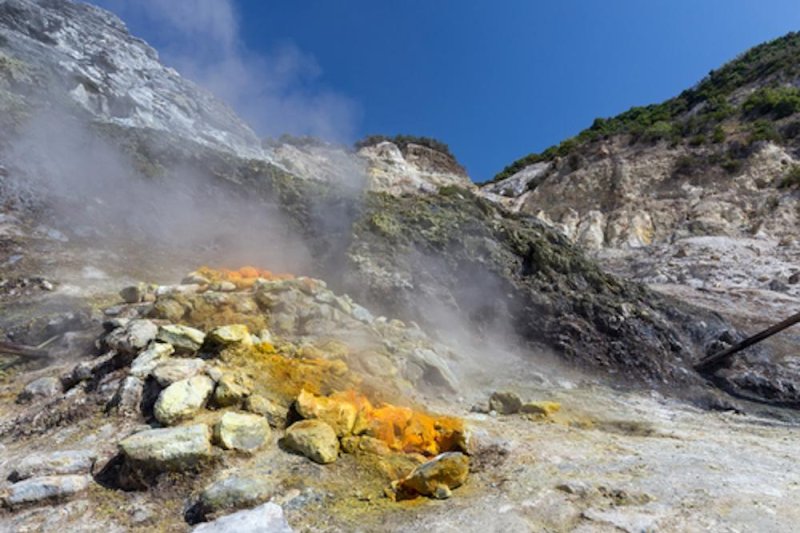While southern Italy's Campi Flegrei hasn't made much noise over the last 30 years, it has gotten hotter. Photo by University of Aberdeen
Sept. 18 (UPI) -- Researchers have discovered the magma source, or so-called "hot zone," of a supervolcano in southern Italy.
Campi Flegrei has been relatively quiet for the last few decades, and hasn't erupted for centuries. In the 1980s, a rush of magma into the volcano's shallow chamber triggered a few small earthquakes.
Seismographic data from those rumbles allowed scientists to pinpoint the source of the magma that flooded into Campi Flegrei's chamber and caldera -- the hot zone. Analysis of the supervolcano's hot zone suggests Campi Flegrei could be nearing an eruption.
By mapping the hot zone, scientists may be able to better predict when volcanoes are going to erupt, allowing officials to evacuate vulnerable populations.
"One question that has puzzled scientists is where magma is located beneath the caldera, and our study provides the first evidence of a hot zone under the city of Pozzuoli that extends into the sea," Dr. Luca De Siena, a researcher at the University of Aberdeen, said in a news release. "While this is the most probable location of a small batch of magma, it could also be the heated fluid-filled top of a wider magma chamber, located even deeper."
Because Campi Flegrei hasn't made much noise over the last 30 years, scientists believe pressure could be building in the supervolcano's pipes.
"Whatever produced the activity under Pozzuoli in the 1980s has migrated somewhere else, so the danger doesn't just lie in the same spot, it could now be much nearer to Naples which is more densely populated," De Siena said.
Researchers liken the volcano's hot zone to a boiling pot of soup. Over the last several years, the volcano has gotten considerably hotter.
"What this means in terms of the scale of any future eruption we cannot say, but there is no doubt that the volcano is becoming more dangerous," De Siena said. "The big question we have to answer now is if it is a big layer of magma that is rising to the surface, or something less worrying which could find its way to the surface out at sea."
Researchers published their analysis of Campi Flegrei this week in the journal Scientific Reports.















